OpenSees Cloud
OpenSees AMI
Section Warping Analysis
Original Post - 29 Mar 2025 - Michael H. Scott
Show your support at Buy Me a Coffee.
Loading a ZeroLengthSection element is the easiest approach to compute the moment-curvature and shear force-shear deformation response of fiber sections in OpenSees.
However, we cannot do a section warping analysis with a zero length element like we can with non-warping sections–at least not without modifying the ZeroLengthSection element to handle seven DOFs per node. That source code modification is a low value, messy proposition.
Instead, we can use a DispBeamColumnWarping3d element of unit length then plot the nodal load-displacement response to get the section warping moment-warping curvature response. And we can examine the fiber section response at one of the element integration points to see the distribution of normal stress generated by applied warping moments, or bimoments.
A simple model and warping analysis of a W10x54 section with yield strength \(\sigma_y\)=36 ksi is shown below.
import openseespy.opensees as ops
# Units = kip, inch
# W10x54
d = 10.1
bf = 10.0
tw = 0.370
tf = 0.615
J = 1.82
E = 29000
v = 0.3
G = 0.5*E/(1+v)
Fy = 36
ops.wipe()
ops.model('basic','-ndm',3,'-ndf',7)
ops.node(1,0,0,0); ops.fix(1, 1,1,1,1,1,1,1)
ops.node(2,1,0,0)
ops.uniaxialMaterial('Hardening',1,E,Fy,0,0)
# Many fibers so we get detailed plots
Nfdw = 32
Nfbf = 32
ops.section('WFSection2d',1,1,d,tw,bf,tf,Nfdw,1,Nfbf,1,'-warping','-GJ',G*J)
ops.beamIntegration('Legendre',1,1,3)
ops.geomTransf('Corotational',1,0,0,1)
ops.element('dispBeamColumnWarping',1,1,2,1,1)
ops.timeSeries('Linear',1)
ops.pattern('Plain',1,1)
ops.load(2, 0,0,0,0,0,0,1)
Kmax = 0.0005
Nsteps = 100
dK = Kmax/Nsteps
ops.integrator('DisplacementControl',2,7,dK)
ops.analysis('Static','-noWarnings')
ops.analyze(Nsteps)
Note that the corotational transformation is the only geometric transformation that works with the DispBeamColumnWarping3d element.
Using displacement control on DOF 7 of the free node gives the warping moment-warping curvature response shown below.
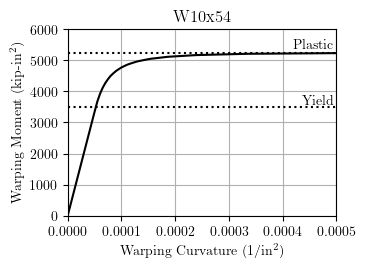
The yield warping moment is Mby=3500 kip-in2 and the plastic warping moment is Mbp=5250 kip-in2.
At the load step where the yield warping moment is reached, i.e., when the fibers at the flange tips reach the yield stress, the normal stresses developed in the section at the middle of the element are shown below. The web has zero stress while each flange has a linear distribution of normal stress.
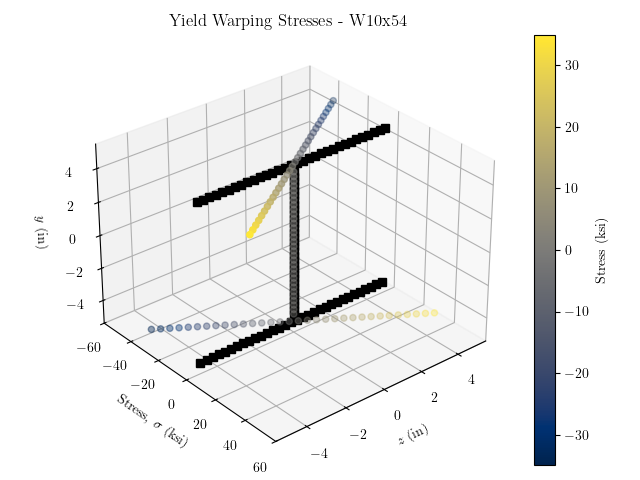
Getting from the normal stress distribution to the yield warping moment requires three steps: from normal stresses to stress resultant forces, then stress resultant forces to flange couple moments, and finally flange couple moments to warping moment.
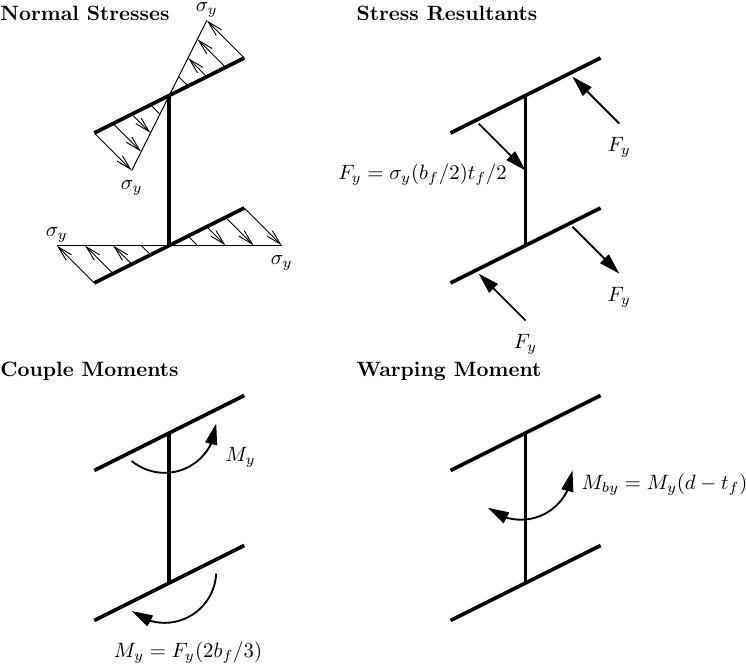
If we apply more warping moment to the section, we will obtain the normal stresses shown below, where the flanges fully plasticize.
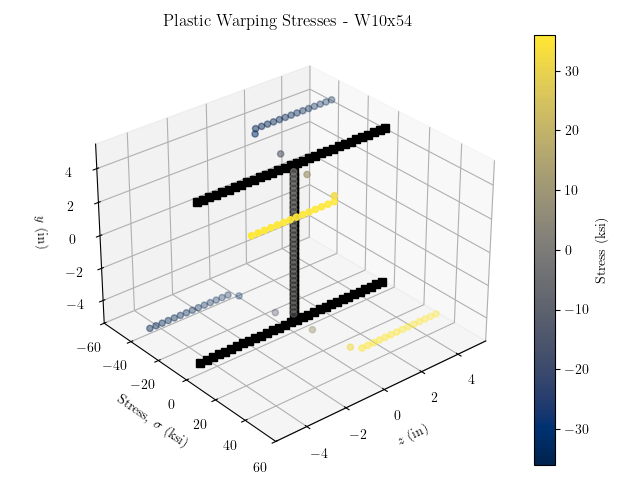
We can get from the normal stress distribution to the plastic warping moment in the same three steps as before. Note that the stress resultant forces and moment arms in the flange differ from those at first yield.
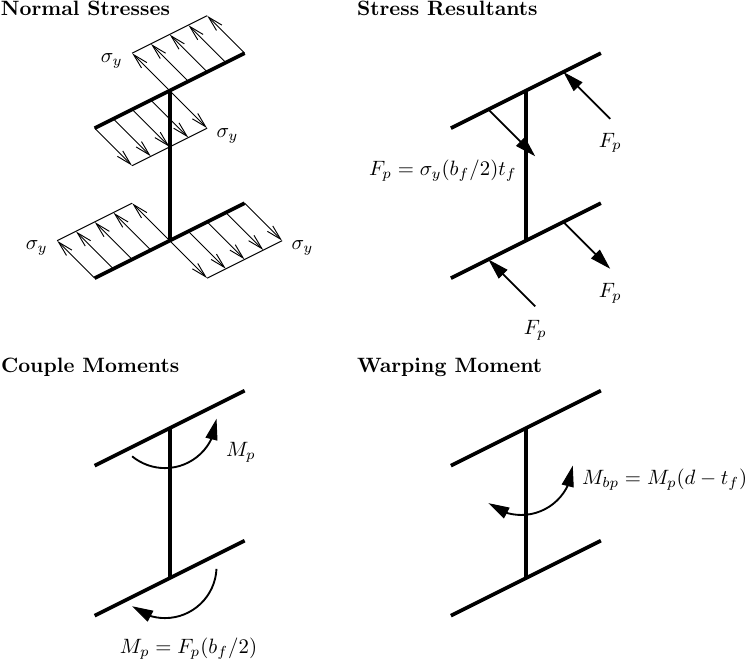
The ratio of plastic to yield warping moment is 1.5, which should make sense because the bimoment is developed from the yield and plastic moments of simple, rectangular flange elements.
Next time I’ll warp some channel sections.